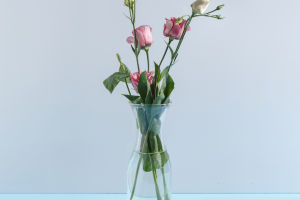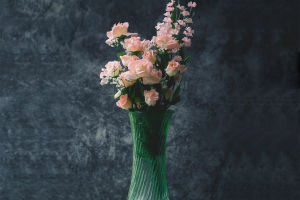Floral artistry, also known as flower arrangement, has its roots in ancient civilizations, with Western floral art originating in Egypt. This art form carries rich symbolic meanings, including names, poetic representations, and various methods of expression.
Floral art not only showcases a deep respect for nature and its beauty but also allows us to express emotions and concepts through the careful selection and arrangement of flowers.
Throughout history, floral art has played a significant role in cultural heritage and daily life, providing people with aesthetic enjoyment and a sense of tranquility.
The Aesthetic and Practice of Floral Art
Floral art is a fusion of natural elements, where flowers, leaves, and stems are thoughtfully selected and arranged to create a unique visual appeal. The beauty of this art lies in the florist's sensitivity and creativity, as well as their skillful use of space, color, and shape.
Floral art is much more than simply placing flowers in a vase. It is an art form that brings the beauty of nature into our living spaces. Through flower arrangement, we can feel the vitality and charm of nature while creating a specific atmosphere and emotional connection within a room.
This ability to elevate our environment makes floral artistry a source of inspiration and a way to enhance the quality of life.
Essential Techniques and Tools for Floral Art
Choosing Flowers: The first step in floral artistry is selecting the appropriate flowers. This includes not only the blooms but also the leaves and stems. Different combinations of flowers can create various styles and atmospheres, from vibrant and bold to soft and subtle.
Arrangement Techniques: When arranging flowers, the positioning and angles of each stem are key to creating a harmonious and balanced design. Proper placement ensures that the flowers stay in place and appear visually appealing.
Tools You Need: Essential tools for floral arrangement include:
• Scissors – Used for trimming the stems to the desired length and shape, ensuring the bouquet stays neat and balanced.
• Containers – Choosing the right vase or container is crucial. The shape and size of the container should complement the flowers and enhance the overall aesthetic.
• Preservation Tips – After arranging flowers, it's important to care for them properly. This includes regularly changing the water, trimming the stems, and cleaning the vase to extend the life of your floral masterpiece.
Japanese vs. Western Floral Art: Unique Styles
Japanese Floral Art (Ikebana):
Japanese flower arranging is characterized by graceful lines, deep meaning, and minimalist flower choices. This style emphasizes the natural beauty and form of the flowers, avoiding excessive artifice. The arrangements are not just about the flowers themselves but also the creation of a mood or feeling, often evoking poetry and deep emotion.
Western Floral Art:
Originating in ancient Egypt and influenced by Eastern styles, Western floral art features a wide variety of techniques and artistic influences. Western flower arranging has evolved rapidly, drawing from various artistic movements and becoming more diverse and dynamic.
Trends in Floral Art:
Ikebana continues to be adored for its natural, simple, and poetic design. It is increasingly popular in modern homes, especially among those who appreciate minimalist beauty. Meanwhile, Western floral arrangements are known for their varied styles and complex techniques, gaining international attention.
The distinct differences between Japanese and Western floral art reflect diverse cultural backgrounds and artistic philosophies, each adding a unique touch to the world of floral design.
The Multifaceted Applications of Floral Art in Our Lives
Floral art serves many purposes beyond just beautifying a space. It plays a significant role in home decoration and as a thoughtful gift for others. With floral arrangements, we can add a touch of charm and warmth to our living environment, making it more inviting and visually appealing.
Floral art is also seen as an elegant and valuable gift, perfect for visiting friends or hosting guests. The richness of a floral arrangement conveys a variety of emotions, from joy and celebration to grace and resilience. It can enhance our mood and cleanse our minds, offering a sense of peace and balance.
Moreover, flower arrangements can bring a decorative effect that's immediate and impactful, something that many other forms of art can't achieve. Floral art is one of the most accessible and relatable forms of beautifying our spaces, combining creativity and nature in a way that is universally appreciated.
In essence, floral art isn't just about arranging flowers – it's a way to cultivate personal creativity, express emotions, and create an environment filled with serenity and beauty. It serves as a bridge between art, nature, and the soul.
Final Thoughts: Bringing Floral Art into Our Lives
Floral artistry is not just an aesthetic pursuit; it's a practice that can enrich our daily lives. By incorporating flowers into our surroundings, we can cultivate beauty, mindfulness, and peace. Whether you're arranging flowers for a special occasion or simply to brighten up your home, the process of floral design is an enjoyable and fulfilling activity.
So, Lykkers, have you ever tried floral art yourself? What's your favorite flower arrangement style – minimalistic Ikebana or a more elaborate Western design? Let's hear your thoughts and share some creative flower arrangement ideas!


